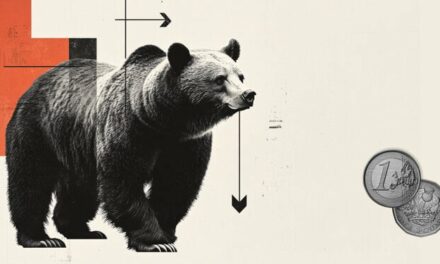The GBP/USD pair gains some positive traction for the second consecutive day on Monday as dovish Federal Reserve (Fed) bets, and the risk-on impulse keep the safe-haven US Dollar (USD) depressed. Spot prices trade just above mid-1.3300s during the Asian session and look to build on Friday’s goodish rebound from the 1.3260 area, or the lowest level since August 5.
The global risk sentiment gets a strong boost after US President Donald Trump backtracked on his threatened 100% tariffs on Chinese imports from November 1. This comes on top of expectations that the US central bank will lower borrowing costs two more times this year and concerns about a prolonged US government shutdown, which undermines the safe-haven buck. Furthermore, bets that the Bank of England (BoE) will keep interest rates on hold for the rest of this year benefit the British Pound and act as a tailwind for the GBP/USD pair.
From a technical perspective, Friday’s breakout through the 23.6% Fibonacci retracement level of the monthly downfall backs the case for additional intraday gains. However, negative oscillators on 4-hour/daily charts make it prudent to wait for some follow-through strength beyond the 38.2% Fibo. retracement level, before placing fresh bullish bets. The GBP/USD pair might then surpass the 1.3400 round figure and climb further towards the 1.3420-1.3425 confluence support – the 200-hour Simple Moving Average (SMA) and the 61.8% Fibo. retracement level.
On the flip side, the 1.3330-1.3325 region (23.6% Fibo.) now seems to protect the immediate downside ahead of the 1.3300 mark and the multi-month low, around the 1.3260 area touched on Friday. The subsequent fall should pave the way for an extension of a nearly one-month-old downtrend from the 1.3725 zone, or over a two-month peak touched in September, towards the 1.3200 round figure. The latter is closely followed by the very important 200-day SMA, around the 1.3180-1.3175 region, which, if broken decisively, will be seen as a fresh trigger for bearish traders.
GBP/USD 1-hour chart

Pound Sterling FAQs
The Pound Sterling (GBP) is the oldest currency in the world (886 AD) and the official currency of the United Kingdom. It is the fourth most traded unit for foreign exchange (FX) in the world, accounting for 12% of all transactions, averaging $630 billion a day, according to 2022 data.
Its key trading pairs are GBP/USD, also known as ‘Cable’, which accounts for 11% of FX, GBP/JPY, or the ‘Dragon’ as it is known by traders (3%), and EUR/GBP (2%). The Pound Sterling is issued by the Bank of England (BoE).
The single most important factor influencing the value of the Pound Sterling is monetary policy decided by the Bank of England. The BoE bases its decisions on whether it has achieved its primary goal of “price stability” – a steady inflation rate of around 2%. Its primary tool for achieving this is the adjustment of interest rates.
When inflation is too high, the BoE will try to rein it in by raising interest rates, making it more expensive for people and businesses to access credit. This is generally positive for GBP, as higher interest rates make the UK a more attractive place for global investors to park their money.
When inflation falls too low it is a sign economic growth is slowing. In this scenario, the BoE will consider lowering interest rates to cheapen credit so businesses will borrow more to invest in growth-generating projects.
Data releases gauge the health of the economy and can impact the value of the Pound Sterling. Indicators such as GDP, Manufacturing and Services PMIs, and employment can all influence the direction of the GBP.
A strong economy is good for Sterling. Not only does it attract more foreign investment but it may encourage the BoE to put up interest rates, which will directly strengthen GBP. Otherwise, if economic data is weak, the Pound Sterling is likely to fall.
Another significant data release for the Pound Sterling is the Trade Balance. This indicator measures the difference between what a country earns from its exports and what it spends on imports over a given period.
If a country produces highly sought-after exports, its currency will benefit purely from the extra demand created from foreign buyers seeking to purchase these goods. Therefore, a positive net Trade Balance strengthens a currency and vice versa for a negative balance.






